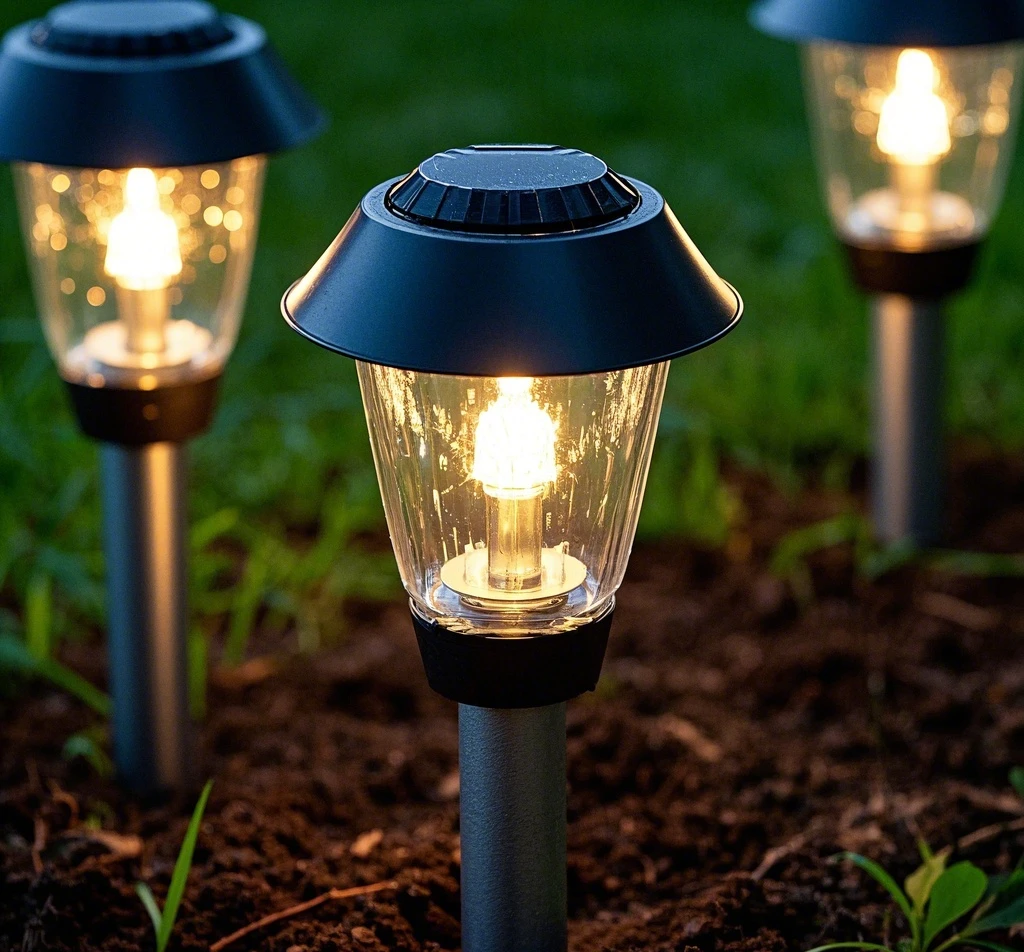Americans love solar lights for their eco-friendly vibe, but many overlook the full picture—how these lights impact the environment from production to disposal. Each stage, from manufacturing to recycling, matters for true sustainability. This guide breaks down how to cut carbon emissions across the solar light lifecycle, meeting state regulations and aligning with growing environmental awareness in the U.S.

Manufacturing: Choose Low-Carbon Options
The way solar lights are made sets the tone for their environmental impact. Here’s how to pick greener options:
- EPEAT certification: Look for Electronic Product Environmental Assessment Tool (EPEAT)-certified lights, which meet strict standards for low-carbon production.
- Material choices: Opt for brands using recycled plastics or aluminum, reducing emissions by up to 20% compared to virgin materials.
- Energy-efficient factories: Some manufacturers power their plants with renewable energy, cutting production emissions further.
- Why it matters: EPEAT-rated solar lights can reduce manufacturing carbon output by 15–25%, a big win for the planet.
Checking product labels or websites for certifications ensures your purchase starts green.
Transportation: Go Local to Cut Emissions
Shipping solar lights across oceans racks up a surprising carbon toll. Here’s how to minimize it:
- Buy local: Choose brands made in the U.S. or North America to slash transport emissions—overseas shipping can account for 10–15% of a light’s lifecycle carbon.
- Check origin: Look for “Made in USA” or similar labels on packaging or product listings.
- Bulk shipping: Some retailers offer consolidated shipping for multiple lights, reducing per-unit emissions.
- Impact: Local solar lights can cut transportation emissions by up to 50% compared to imported ones.
Prioritizing domestic products is a simple way to shrink your carbon footprint.
Usage: Maximize Efficiency
How you use your solar light affects its energy savings and environmental impact. Smart habits make a difference:
- Enable smart dimming: Motion sensors or auto-dimming modes cut energy use by 30–50%, extending battery life and reducing recharge needs.
- Clean panels regularly: Dust or debris can drop photovoltaic efficiency by 20%, forcing the battery to work harder. A monthly wipe keeps it optimal.
- Optimize placement: Position lights in direct sunlight to maximize charging, reducing reliance on backup power.
- Savings: Efficient use of a solar light can save 80–90% of the energy used by traditional lighting over a year.
These steps ensure your light runs lean, minimizing its environmental impact.

Recycling: Dispose Responsibly
When a solar light reaches the end of its life, proper recycling is key to avoiding waste. Here’s how to do it right:
- Follow state rules: Most U.S. states require separate disposal for batteries and electronics to prevent landfill pollution.
- R2-certified brands: Responsible Recycling (R2) certified companies offer take-back programs, often with prepaid shipping.
- Find drop-off points: Use the SERI (Sustainable Electronics Recycling International) website to locate nearby recycling centers.
- Incentives: In states like California, recycling solar lights may qualify for tax credits, saving you money while reducing waste.
Proper disposal keeps hazardous materials out of landfills and recovers valuable components for reuse.
Regional Tips for U.S. Users
Tailoring your approach to your state’s regulations and resources boosts sustainability:
- California: Apply for recycling tax credits through CalRecycle, and use SERI to find local e-waste centers for solar light batteries.
- Texas: Partner with local recyclers like Texas Recycles Electronics to avoid shipping emissions for disposal.
- Northeast: In snowy areas, choose cold-resistant solar lights to maintain efficiency, and clear snow from panels to ensure charging.
- Nationwide: Look for EPEAT labels and “Made in USA” tags at purchase to minimize upfront emissions.
These region-specific steps align with local laws and make reducing your carbon footprint easier.
A Greener Path for Solar Lights
By focusing on the full lifecycle of solar lights—from production to recycling—you can slash their carbon impact while meeting U.S. state regulations. Choose EPEAT-certified models, buy local, use smart features, and recycle responsibly to maximize sustainability. These steps can cut emissions by 30–50% compared to standard practices, aligning with America’s growing eco-consciousness. With a bit of planning, your solar light can light up your space and keep the planet a little greener.

Comments